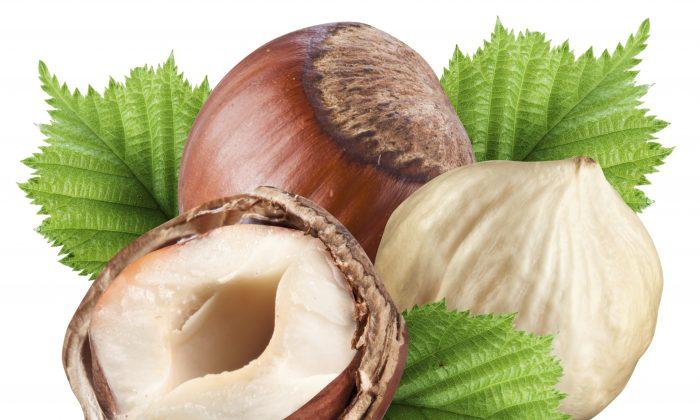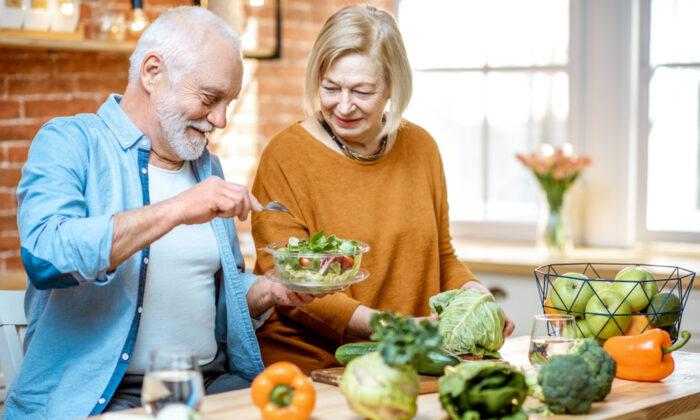When we think about treating high blood pressure, diuretics, calcium blockers, and beta blockers are what usually come to mind. David Rakel, author of “Integrative Medicine,” a book about therapies that address all aspects of health to facilitate healing, cites research showing that only one-third of people taking these medications get real benefit from them. These medications can also have some concerning side effects, such as muscle weakness, which happens for some people who take statins to reduce blood pressure.
What many people don’t know, is that eating the right diet can be an effective way to treat high blood pressure. While it takes effort to be mindful of eating foods that support blood pressure health, it is well worth the effort and can lead to reducing levels of medication, with the possibility of not needing any medications at all. Here are 11 basic changes you can make in your diet to reduce blood pressure. Please note that any medication changes should be closely monitored by a doctor.
1. Potassium
Consuming foods high in potassium helps to dilate blood vessels, which reduces blood pressure. Experiment with recipes that include potassium-laden produce such as avocados, potatoes, carrots, bananas, peaches, spinach, oranges, apples, and coconut water.
A standard serving recommendation to aim for is seven to nine servings of fruits and vegetables a day. While this sounds like a lot, keep in mind that servings are only one half-cup rather than a full one.
In the meat department, unprocessed chicken and turkey, salmon, leg of lamb, and tuna, are good sources of potassium, according to holistic health educator, Paula Bartholomy, of Hawthorn University.
2. Magnesium
Magnesium also helps to maintain healthy blood pressure. When magnesium levels are too low, our blood vessels constrict, which increases blood pressure.
Bartholomy suggests eating a variety of magnesium-rich foods, including dark green leafy greens and seaweeds, grains like whole wheat, filberts, millet, brown rice, barley, and rye; legumes like black-eyed peas; nuts like Brazil nuts, cashews, almonds, and walnuts; shrimp; and fruits and vegetables like sweet corn, parsley, avocados, dried apricots, sunflower seeds, garlic, raisins, potatoes, banana, and figs. Mineral-rich sparkling waters also can be a source of magnesium.
3. Angiotensin
Angiotensin II is a hormone known to increase blood pressure. A natural antidote to angiotensin is consuming foods that contain angiotensin converting enzyme inhibitors, which are the same inhibitors found in some blood pressure medications.
Ingrid Kohlstadt, author of “Advancing Medicine with Food and Nutrition” recommends foods in this category, including egg yolks, sardines, tuna, bonito, fish sauce, dried salted fish, garlic, gelatin, hawthorn berries, casein, sour milk, hydrolyzed whey, sake, kelp, hydrolyzed wheat germ, and corn protein.
It should be mentioned that the health benefits of garlic come from eating it raw rather than cooked and having at least four cloves a day. This amount may not agree with everyone so you can modify accordingly.
4. Celery
According to a study by George Matelejan, author of the “World’s Healthiest Foods: Essential Guide for the Healthiest Way of Eating,” consuming four stalks a day of celery can help reduce blood pressure. Celery contains compounds that relax the muscles of the arteries that regulate blood pressure and allow vessels to dilate.
5. Healthy Fats
Healthy fats should be part of an anti-hypertensive diet. Such fats include extra virgin olive oil, coconut oil, and walnut oil. Healthy oils can help to reduce inflammation in the body, which means less narrowing of the blood vessels. Avoid trans-fats and as much refined foods as possible, because these can cause inflammation.
6. Omega-3s
Consume foods high in omega-3 fatty acid. Bartholomy recommends flax seeds, walnuts, and deep-water fish for their anti-inflammatory effects. George Mateljan says that walnuts are high in an amino acid that can help to reduce blood pressure.

Bok choy and other cruciferous vegetables help your liver detox. (LRArmstrong/thinkstock)
7. Cruciferous Vegetables
Cruciferous vegetables support liver detoxification, which we should all pay attention to because of the many toxins we’re exposed to on a daily basis. According to Bartholomy, liver detoxification is especially important when taking blood pressure or any medication. Since medications are broken down in the liver and are considered toxins, this is additional work for the liver. Detoxification helps to support healthy liver functioning.
Cruciferous vegetables include foods such as bok choy, broccoli, kale, Brussels sprouts, cabbage, arugula, turnips, cauliflower, collard greens, watercress, and radishes.
8. Fiber
Consume fiber on a regular basis (at least 30 grams daily). Fiber helps to remove excess cholesterol and toxins from the body.
9. Avoid Substances That Deplete
Diuretics, laxatives, caffeine, alcohol, aspirin, and low magnesium intake all deplete the body of potassium. Excess calcium, low potassium, alcohol, diuretics, and conventional antibiotics, deplete body of magnesium, according to Bartholomy.
10. Avoid Acid-Forming Foods
Avoid or greatly reduce the consumption of acid-forming foods. Sang Whang in his book “Reverse Aging” reports that high levels of acid can weaken blood vessels, decrease oxygen levels, and increase the viscosity of blood, all often overlooked factors in high blood pressure.
Sugar, coffee, alcohol, and excess animal protein are especially acid-forming in the body. Drink eight to ten glasses of purified water daily to flush toxins and prevent dehydration.
11. Reduce Sodium
Avoid high-sodium foods and consume at least 500 milligrams of salt substitute daily containing sodium chloride as those containing potassium chloride can be harmful to some people. Benson’s Table Tasty No Potassium Chloride Salt Substitute and is potassium chloride-free.
June Rousso, Ph.D. is a licensed psychologist with a private practice in New York City. She is a graduate of the New School for Social Research and is currently studying holistic nutrition at Hawthorn University. She loves to write and educate people about nutrition so they can make more informed choices.






Friends Read Free